Sittard 作者: 来源: 发布时间:2021-10-18
一、人口,面积,所属地区
Country Netherlands
Province Limburg (Netherlands)
COROP South Limburg
Municipality Sittard-Geleen
Population (1 January 2011) 37,730
Sittard is a city in the Netherlands, situated in the southernmost province of Limburg.
The town is part of the municipality of Sittard-Geleen and has almost 37.500 inhabitants in 2016.
In its east, Sittard borders the German municipality of Selfkant (in the state of North Rhine-Westphalia).
The city centre is located at 45 m above sea level.
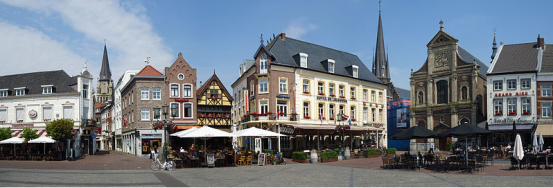
The Markt (market square) of Sittard
二、自然地理

Sittard railway station
Sittard is a railway station located in Sittard, Netherlands. The station was opened in 1862 and is located on the Maastricht–Venlo railway and the Sittard–Herzogenrath railway. Train services are operated by Nederlandse Spoorwegen and Arriva. All services from South Limburg to the north pass through Sittard.
Sittard has the longest railway platform in the Netherlands with a length of 700 metres.
Train services
The following train services call at this station:
Express services:
Intercity: (Schagen)–Alkmaar–Amsterdam–Utrecht–Eindhoven–Maastricht
Intercity: Enkhuizen–Amsterdam–Utrecht–Eindhoven–Maastricht
Intercity: Enkhuizen–Amsterdam–Utrecht–Eindhoven–Heerlen
Local services:
Stoptrein: Sittard–Heerlen–Kerkrade
Stoptrein: Roermond–Sittard–Maastricht Randwyck
Major roads
N276, N294, N297
三、经济发展和规模
Total » Total » A-U All economic activities - Sittard-Geleen - Natural gas, delivered
1,552,248.00
1,000 m3 in 2018
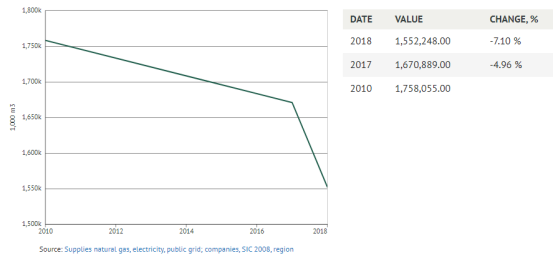
Total » Total » A-U All economic activities - Sittard-Geleen - Electricity. delivered
362,968.00
1,000 kWh in 2016
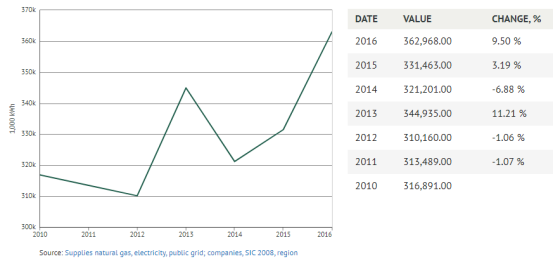
C Manufacturing - Geleen/Sittard (SG) - Economic climate » Economic climate last three months » Economic climate declined
7.90
% in 2017Q3
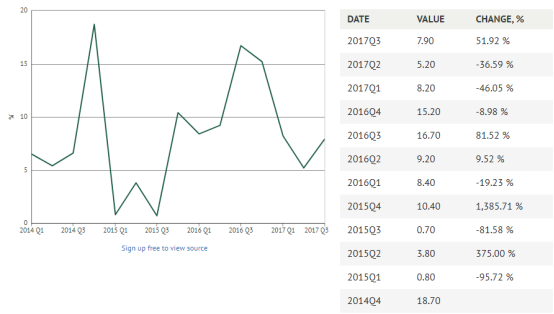
G Wholesale and retail trade - Geleen/Sittard (SG) - Economic climate » Economic climate last three months » Economic climate declined
5.60
% in 2017Q3
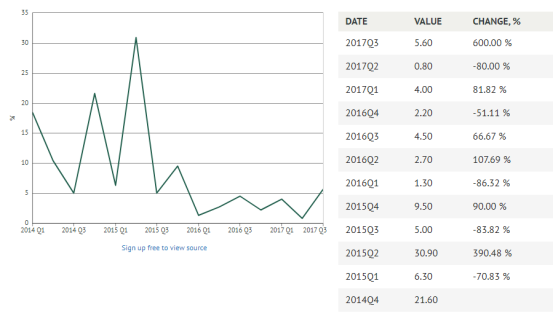
四、产业特点/重点项目
Sittard houses the SABIC European head office and a large DSM office; both companies having large chemical production facilities in nearby Geleen. The head office of the plant hire company Boels Rental is also located in Sittard.
SABIC
SABIC (Saudi Basic Industries Corporation) is a Saudi multinational chemical manufacturing company which is a subsidiary of Saudi Aramco. It is active in petrochemicals, chemicals, industrial polymers, fertilizers, and metals. It is the second largest public company in the Middle East and Saudi Arabia as listed in Tadawul. 70% of SABIC's shares are owned by Saudi Aramco. Private shareholders are from Saudi Arabia and other countries of the six-nation Gulf Cooperation Council (GCC).
SABIC was the world's fourth-largest chemical producer in 2013. It is currently the second-largest global ethylene glycol producer and is expected to top the list after the introduction of new projects. SABIC is the third-largest polyethylene manufacturer, the fourth-largest polyolefins manufacturer, and the fourth-largest polypropylene manufacturer.[4] SABIC is also the world's largest producer of methyl tert-butyl ether, granular urea, polycarbonate, polyphenylene and polyether imide.
In 2017, SABIC was ranked fourth in the world among chemical companies by Fortune Global 500,. By the end of 2018 SABIC was the world's 281th-largest corporation. In 2010, SABIC grew to be the second-largest diversified chemical company, or first when measured only by asset value. Measured over all its branches, it became (as of 2014) the world's 98th-largest corporation on the Forbes Global 2000 ranking (which lists only publicly traded companies), with sales revenues of $50.4 billion, profits of $6.7 billion and assets standing at $90.4 billion.
SABIC European Head Office in Sittard, the Netherlands
The company is based in Riyadh and has interests in 17 affiliated companies, which range from full ownership to significant partial participation.
Operations
SABIC underwent a business restructuring in October 2015, that saw the absorption of the commodity chemicals produced under the Innovative Plastics SBU into the Chemicals and Polymers SBUs. Along with this, the Specialties SBU was created to house the remainder of the Innovative Plastics products that did not fall under the commodity umbrella and the Innovative Plastics SBU would cease to exist by January 1, 2016. This change follows the reallocation of the Performance Chemicals portfolio into the Chemicals SBU. The business units are currently: Chemicals, Polymers, Fertilizers (SABIC has three fertiliser affiliates: Safco, Samad and Ibn Al-Baytar ), Metals and Specialties, plus manufacturing. Along with this change it was announced that the Innovative Plastics headquarters in Pittsfield, United States, would be closed, and the SABIC Regional Headquarters for the Americas would be relocated to Houston.
In July 2002, SABIC commenced operations in Europe after the $2 billion acquisition of the petrochemicals business of Dutch group DSM.[13] SABIC Europe, SABIC's European subsidiary, produces over 2 million metric tonnes of polymers and over 5 million metric tonnes of basic chemicals. It employs over 3,000 people and has two major manufacturing locations in Geleen in the Netherlands and Gelsenkirchen in Germany.[4] After forming SABIC Europe, SABIC became the 11th-largest petrochemicals company in the world. The purchase of DSM signified SABIC's intent to expand and become a true global company.
In 2004, the value of SABIC shares, listed on the Saudi Stock Exchange (Tadawul), increased 170% while its net profits increased by 112% from 2003 to 2004.
In 2005, SABIC was the Middle East's largest (in terms of market capitalization) and most profitable publicly listed non-oil company, the world's 11th-largest petrochemical company, ranked 331 on the Fortune Global 500 for 2005, the second-largest producer of ethylene glycol and methanol in the world, the third-largest producer of polyethylene and overall the fourth-largest producer of polypropylene and polyolefin. Standard & Poor's and Fitch Ratings claimed SABIC to be the world's largest producer of polymers and the Persian Gulf region's largest steel producer for 2005; they assigned SABIC an "A" corporate credit rating. That same year, Bloomberg ranked SABIC as the 13th-largest company in the world in terms of market capitalization (at the beginning of 2005 it exceeded ر.س 375 billion, the equivalent of US$100 billion) and the second-largest by market value outside the US and UK.
In June 2006, SABIC established the "SABIC Sukuk Company" to issue Islamic bonds (Sukuk) that are estimated to range between ر.س 1 billion (US$266.67 million) and ر.س 3 billion (US$800 million).
In January 2007, SABIC Europe took over Huntsman Corporation plants in the UK. Headquartered in Sittard, Netherlands, SABIC Europe has a European wide network of sales offices and logistic hubs, as well as three petrochemical production sites in Europe: Geleen (Netherlands), Teesside (United Kingdom), and Gelsenkirchen (Germany).
In 2008, SABIC Europe produced 7.3 million metric tons of petrochemicals, mainly for the European market.
On May 21, 2007, SABIC acquired General Electric's Plastics division, in a US$11.6 billion cash deal, including US$8.7 billion of its liabilities, and launched SABIC Innovative Plastics. In that year, the company ranked 145 (previous rank: 301) in the Forbes Global 2000 list. As of 2014, SABIC Innovative Plastics is a multibillion-dollar company with operations in more than 25 countries and over 9,500 employees worldwide.
In July 2009, SABIC received approval from the Chinese government to build a US$3 billion petrochemical complex in China, in order to gain a foothold in the world's fastest-growing chemicals market.
In January 2018, SABIC announced that it had acquired a 24.99% stake in Clariant, the Swiss specialty chemical manufacturer. The stake was acquired from activist investor White Tale, and at Clariant's prevailing market-capitalisation would have been valued in the region of $2.4bn. The actual transaction price was undisclosed. SABIC CEO Yousef Al-Benyan had previously stated, in November 2017, that the company was looking to spend $3bn-$10bn on acquisitions over the next 10 years.
On March 27, 2019, SABIC announced that state-owned energy company Saudi Aramco signed a share purchase agreement to acquire a 70% majority stake in SABIC from the Public Investment Fund of Saudi Arabia in a private transaction worth $69.1 billion. The transaction was completed in June 2020.
Production and major expansions
Expansion operations and investments are projected to amount to US$20 billion in 2007 and US$70 billion until 2020. The overall total production in 1985 was 6.3 million metric tons; by the end of 2008 it had reached 56 million metric tons. By 2020, SABIC intends to produce over 135 million metric tons per year.
Financial performance
Net profits of SABIC in 2008 touched ر.س 22 billion (US$5.86 billion), while total assets stood at ر.س 272 billion (US$72.5 billion) at the end of 2008 and the value of current assets at the end of 2008 stood at ر.س 95 billion (US$25 billion). The Fortune 500 ranking set SABIC revenues as of $40.2 billion
SABIC reported preliminary consolidated financial results for the period ended September 30, 2010. Net income for the third quarter of 2010 was ر.س 5.33 billion, compared to net income of ر.س 3.65 billion in the same period the previous year, representing an increase of 46 percent and compared to ر.س 5.02 billion for the previous quarter, a rise of 6 percent.
According to the 2019 Fortune Global 500 list, SABIC reported $45.1 billion in revenues and $5.7 billion in profits for the 2018-2019 FY, ranking it in fourth place among chemical companies and #252 in the list.
五、风景名胜,景点
Sittard has a small historic city centre with numerous architectural monuments, including several old churches (St Peter's, St Michael's, Basilica of Our Lady of the Sacred Heart), monasteries and a few half-timbered houses. The central market square has many restaurants and bars. The city has retained part of its city wall. On the south-eastern side of the city centre, the St Rosa chapel crowns the Kollenberg hill. Museum "Het Domein" is situated in a converted nineteenth century school building in the city centre. It focuses on contemporary art, urban history and archaeology. There is also a Commonwealth War Cemetery, where 239 soldiers of the Commonwealth Nations lie buried. Among them Dennis Donnini, the youngest to have received the Victoria Cross in World War II.
Unit 13 outdoor adventures
If you and your team are looking for a challenge and entertainment, then the Tactical Laser Tag Combat arrangement is just for you! Two teams battle for victory during exciting, realistic missions!
Suggested Duration:2-3 hours
Tel: +31 45 850 9339
Address: Nusterweg 66 Gebouw BD, 6136 XB Sittard The NetherlandsMap
Website: https://unit13.eu/
Escape Centrum Limburg & VR Experience Sittard
Address: Helstraat 16, 6131 CZ Sittard, Netherlands
Phone: +31 6 13537112
六、历史文化
Archaeological discoveries have dated the first settlement in the Sittard area around 5000 B.C. Present day Sittard is assumed to have been founded around 850 A.D. and to have been built around a motte. Sittard was first mentioned in 1157. It was granted city rights by the Duke of Limburg in 1243. In 1400 it was sold to the Duchy of Jülich, and remained in its possession until 1794. The city was destroyed and rebuilt repeatedly, due to fires and various conflicts during the 15th-17th century. It was a stronghold until it was largely destroyed in 1677, during the Franco-Dutch War. Under French occupation (1794-1814), Sittard was part of the Roer department. Since 1814, it has been part of the Netherlands, except for the years 1830–1839, when it joined the Belgian Revolution. During the Second World War, it was occupied by the Germans, who incorporated several small municipalities, like Broeksittard, into Sittard. The city was liberated September 18–19, 1944 by the 2nd Armored Division. The historic town was mostly spared destruction, despite lying in the frontline for over four months, in which over 4000 shells and rockets struck the city.
After World War II, Sittard expanded rapidly and many new neighbourhoods were built. The coal mines in the region were the driving force of a booming economy, until closed in the 1960s and 70s. It now has large industrial zones and office premises.
七、其他信息
Education
There are several schools for higher vocational education and training (hbo) in the city, including faculties of the Hogeschool Zuyd and Fontys Hogescholen. Large schools for secondary education in Sittard are 'Trevianum' (havo and vwo) and 'Da Capo' (vmbo).
Sports
Sittard is the home of the professional football club Fortuna Sittard and of the handball club Sittardia.
The biggest Kennedy march of the Netherlands starts and ends in Sittard.
Dialect
The Sittard dialect is a particular variant of Limburgish.
八、联系方式
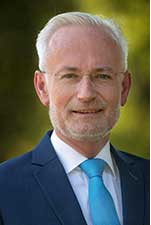
Mayor Hans Verheijen
Phone: 046-4778140
E-mail: secretariaat.burgemeester@sittard-geleen.nl
Councilor Pieter Meekels
1st Deputy Mayor
Appointments via the secretariat
Phone: 046-477 8115
F-mail: wethouder.pietermeekels@sittard-geleen.nl
Councilor Andries Houtakkers
2nd Deputy Mayor
Appointments via the secretariat
Phone : 046-4778106
E-mail: wethouder.andrieshoutakkers@sittard-geleen.n
Dial 14 046
Municipality of Sittard-Geleen
PO Box 18, 6130 AA Sittard
Faxing 046 - 400 00 39
https://www.sittard-geleen.nl
Facebook: Gemeente Sittard-Geleen @sittardgeleen
Twitter: Sittard - Geleen @sittardgeleen
